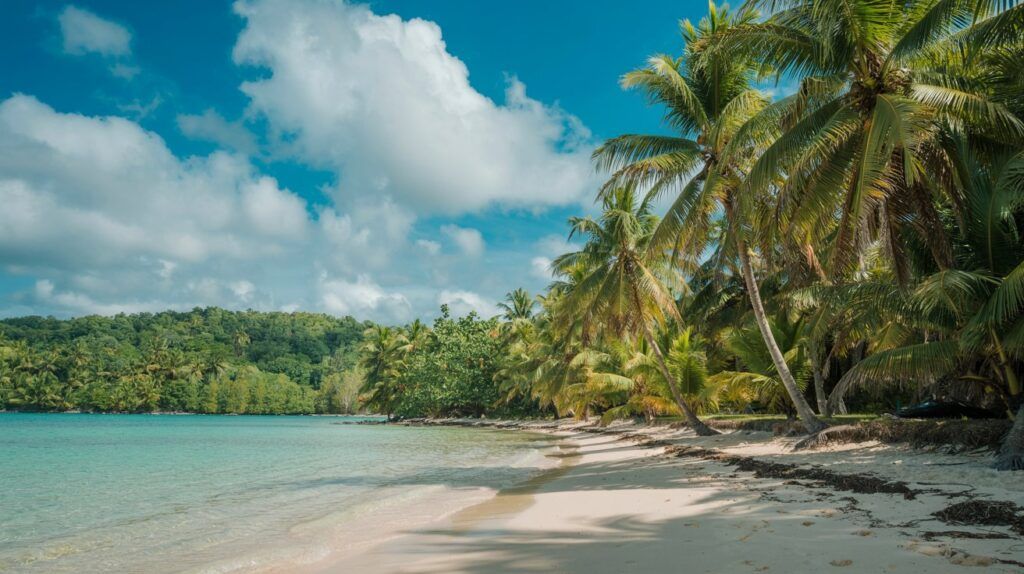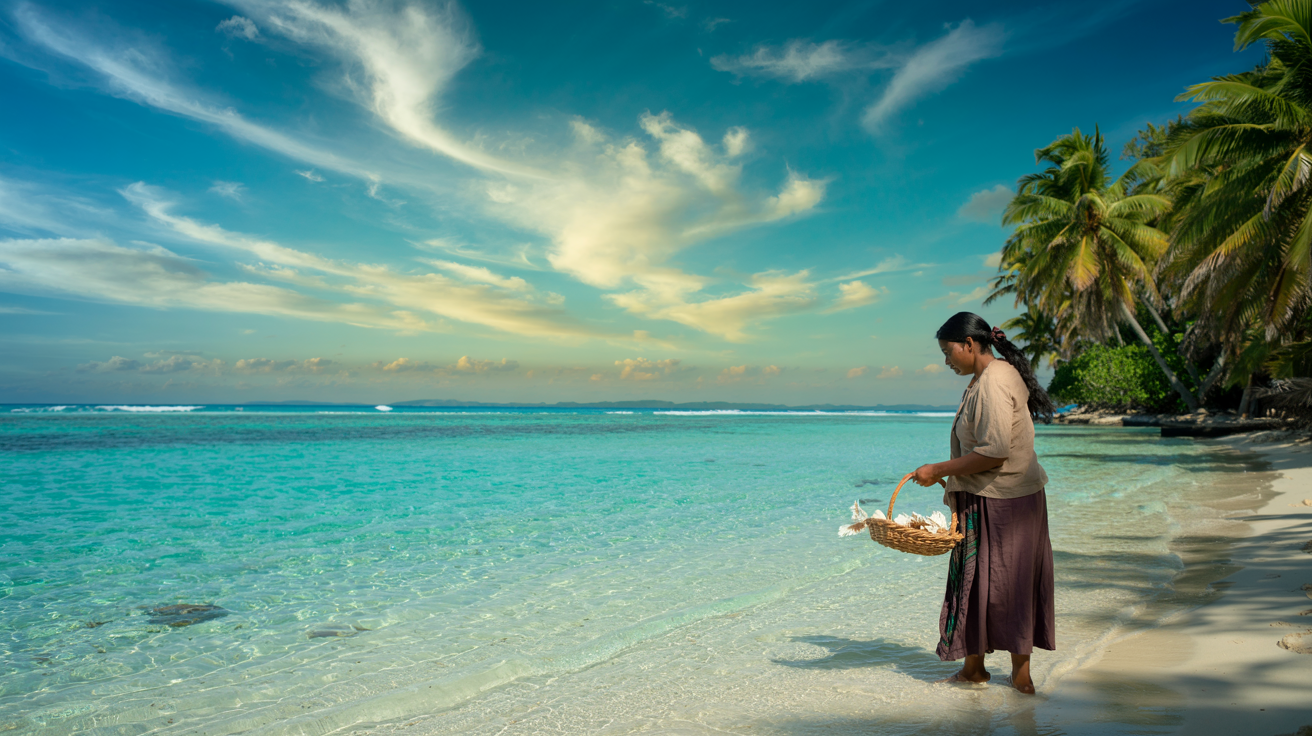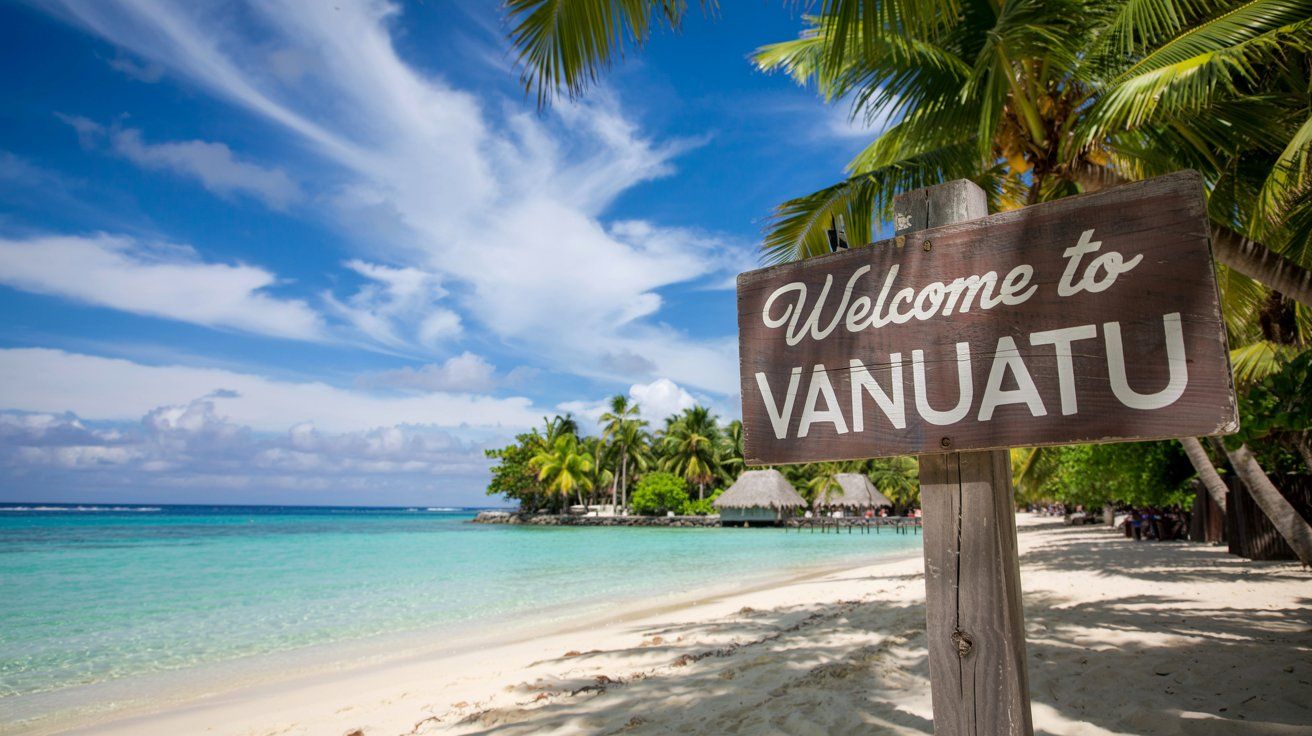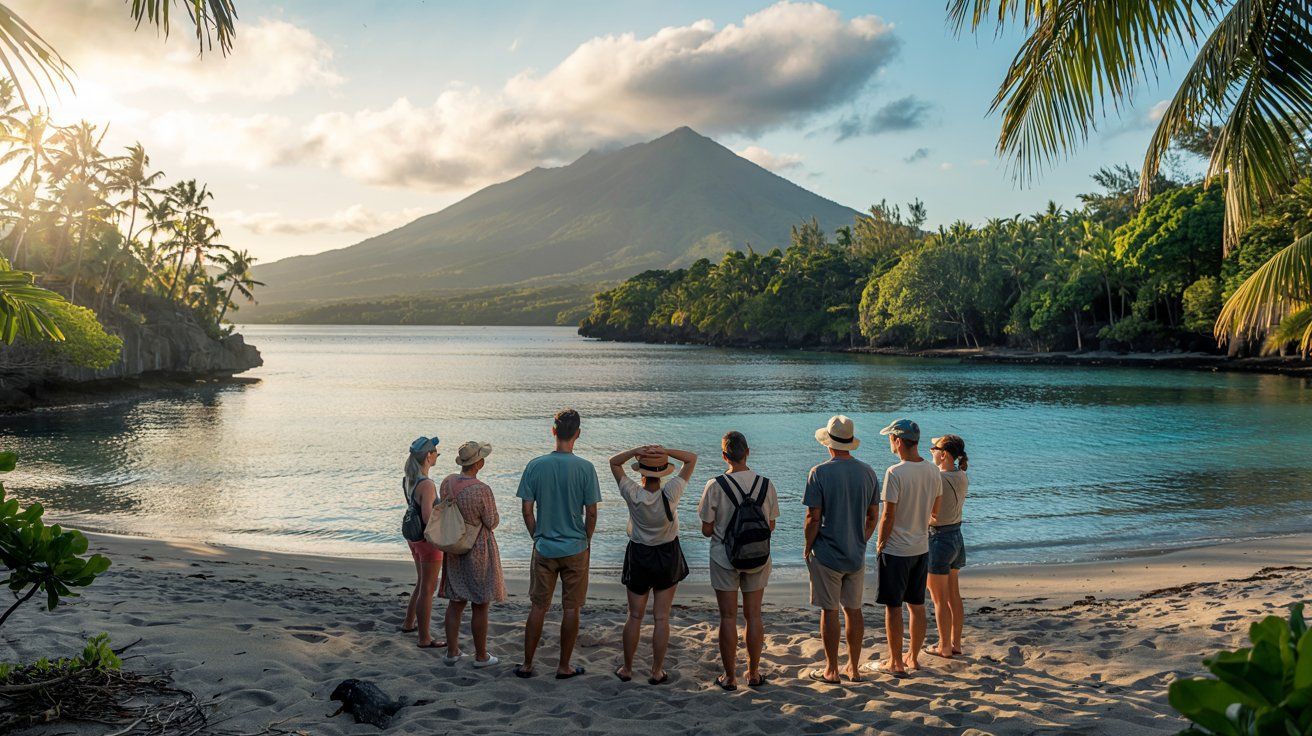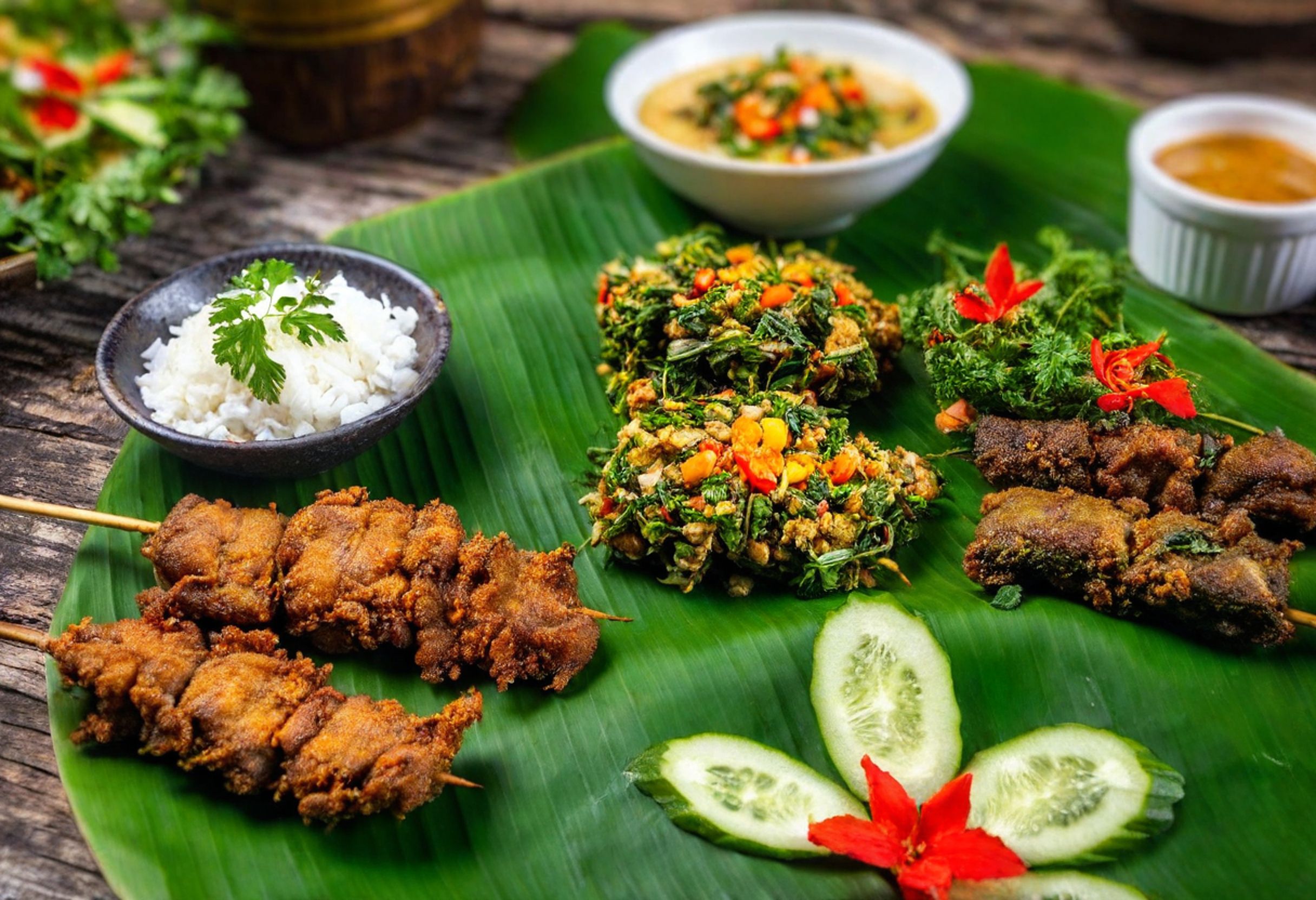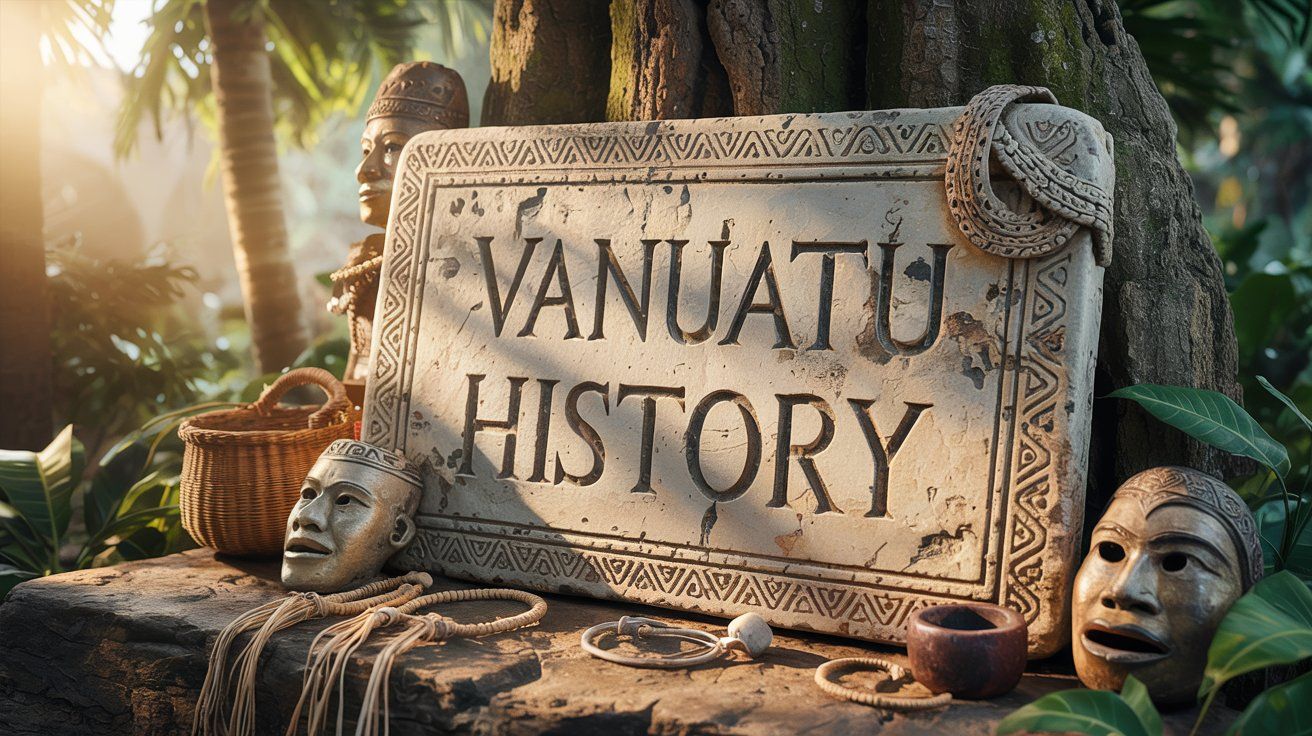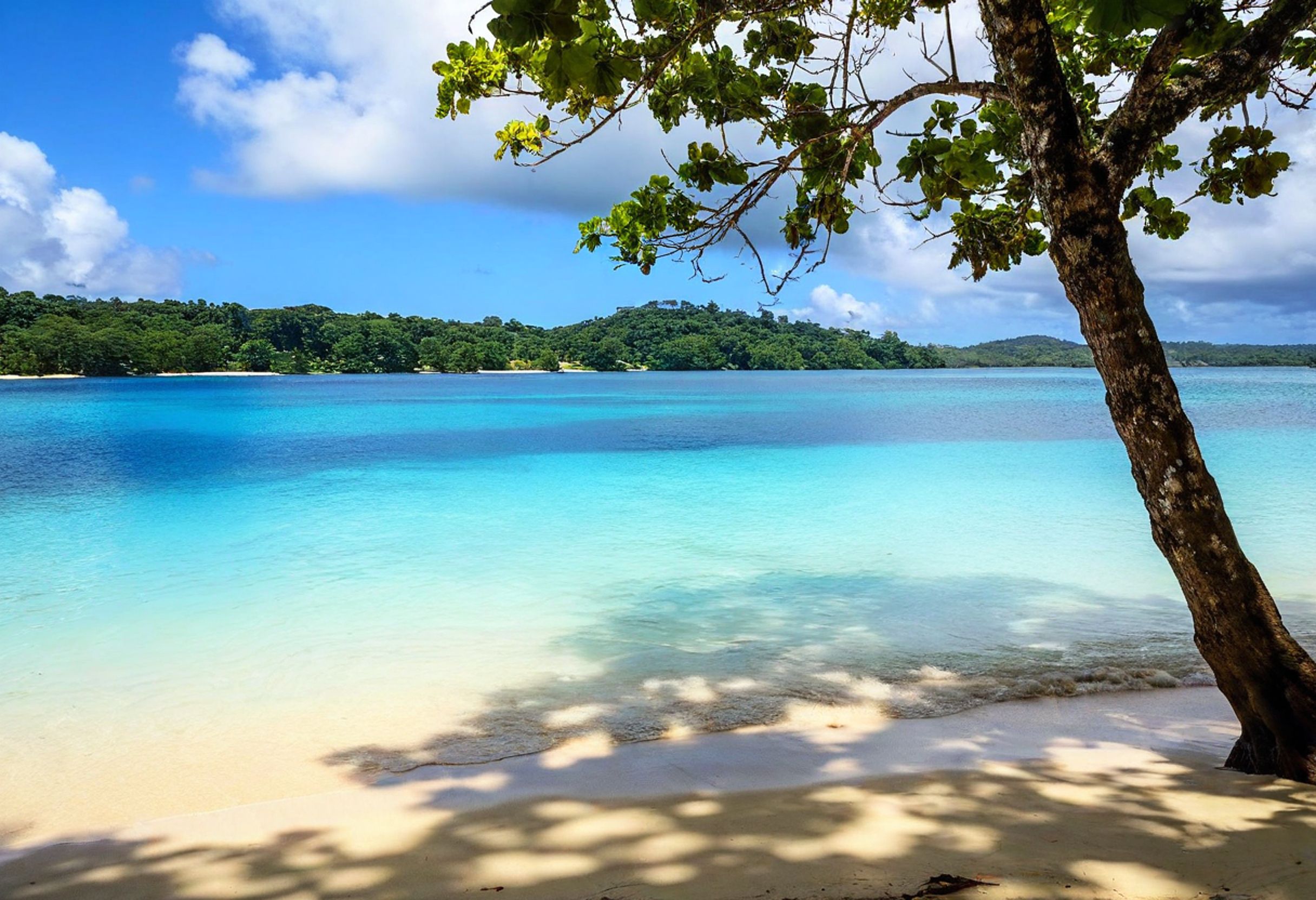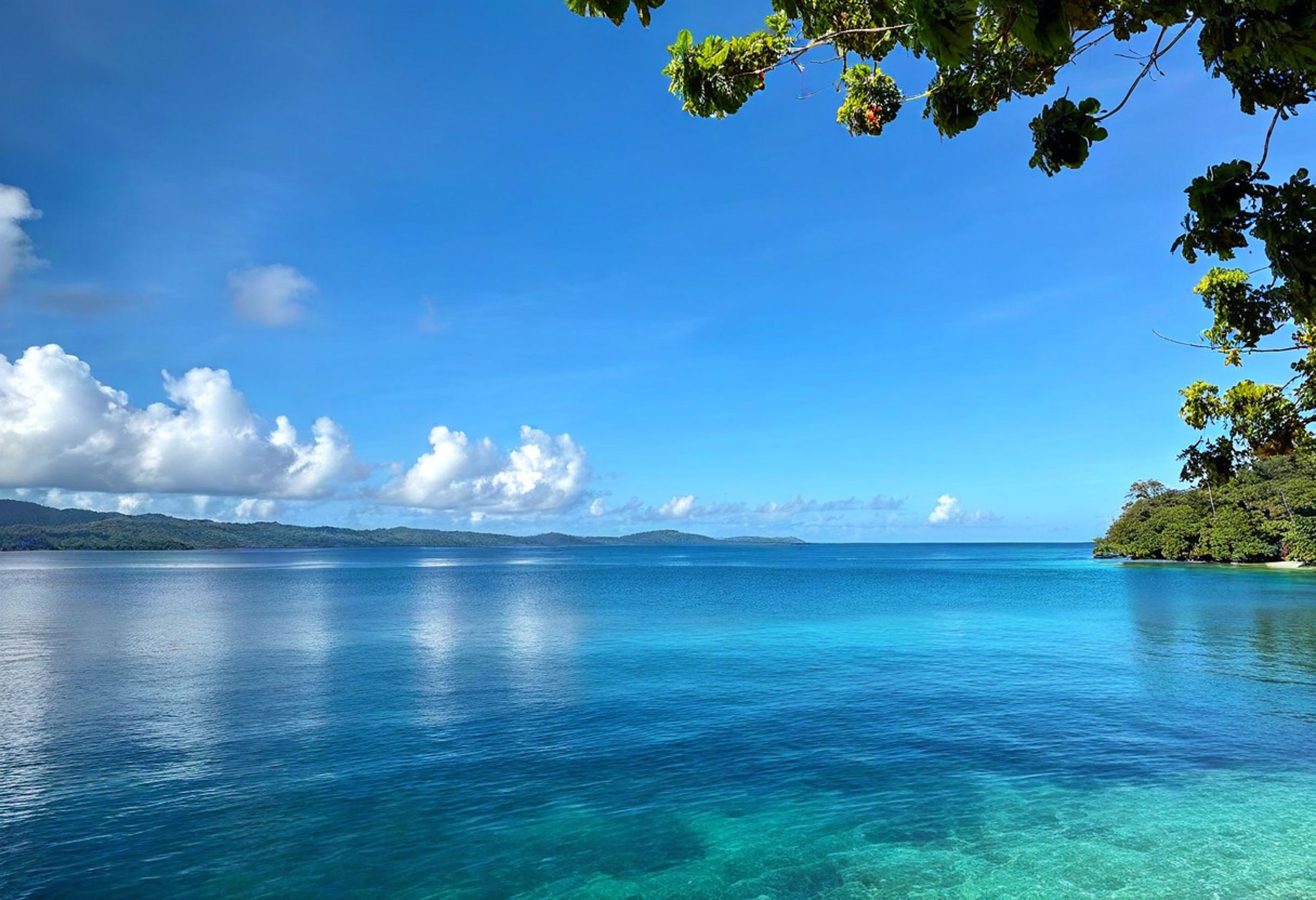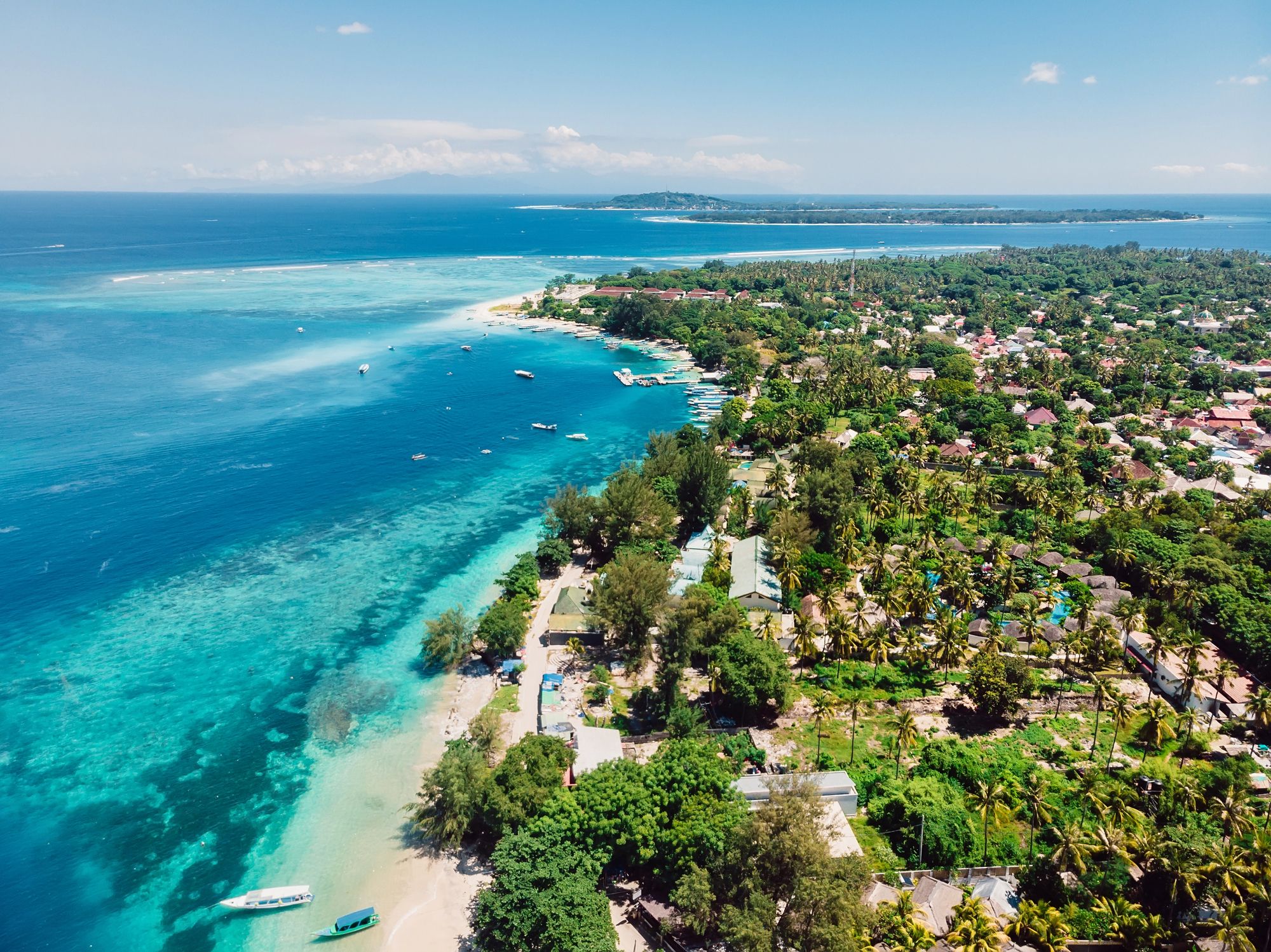The Banks Islands rest at Vanuatu’s northern tip, giving you a peek into Pacific island life as it’s rarely seen. Rugged and remote, the islands are all about untouched beaches, dense rainforests, and vibrant cultures that haven’t really changed much with time. Hardly anyone ventures this far north, so you get to soak up real village life and customs that have survived for generations—plus, you can snorkel, fish, and hike without bumping elbows with other tourists.
Sure, getting to the Banks Islands takes some effort, but if you make the trip, you’ll find it’s absolutely worth it. Mota Lava and the little Rah islet are top spots for fishing and snorkeling in clear-as-glass water. Across the islands, locals keep traditions alive, so you’ll find cultural exchanges that feel real, not staged for visitors.
From overwater bungalows to beachfront resorts, find your perfect stay in this island nation of more than 80 islands. Instant booking with best price guarantee!
Browse Accommodations Now
Travel light, bring enough cash, and be ready to slow your pace. The Banks Islands run on “island time”—accommodations and transport are limited. You won’t find luxury here, but the wild beauty and total break from the modern world make up for it. Honestly, most travelers I’ve talked to say it’s the Banks’ simple, authentic vibe that makes it their favorite part of Vanuatu.
Overview of Banks Islands
The Banks Islands are a remote volcanic group in northern Vanuatu, rich in cultural traditions, dramatic scenery, and, well, not much in the way of touristy stuff. These islands let you experience Melanesian life as it’s been for centuries.
Location and Geography
The Banks Islands make up the northern part of Vanuatu’s Torba Province, out in the southwest Pacific. The main islands—Vanua Lava (the biggest), Santa Maria (aka Gaua), Mota, and Mota Lava—are all volcanic.
You’ll see some wild landscapes: active volcanoes, thick forests, and those classic white-sand beaches. Vanua Lava towers above the rest, and Gaua has a stunning crater lake.
Along the coast, you can snorkel among bright coral reefs. Head inland for waterfalls and hikes through lush greenery. The weather is tropical, with a rainy season from November to April.
To get around, you’ll mostly rely on local boats since roads are few and far between, even on the bigger islands.
History and Culture
Melanesian peoples have lived in the Banks Islands for thousands of years, building up rich traditions. Europeans first showed up in 1606, when Portuguese explorer Pedro Fernández de Quirós sailed past.
In the 1800s, Anglican Bishop George Selwyn brought Christianity here, and now locals blend those beliefs with traditional ones. Villages still practice kastom—think unique dances, sand drawing, and grade-taking ceremonies.
Most folks farm and fish to get by. Villages are small, with houses built from local stuff. Chiefs still run the show, and social ties stay strong.
Culture here feels mostly untouched compared to busier parts of Vanuatu. When you visit, respect local customs—sometimes you’ll need to bring a small gift for the chief.
Language and Local Customs
Bislama (Vanuatu’s creole) is the go-to language across the country, but the Banks Islands are a linguistic wonder. Over 15 languages are spoken here, making it one of the most language-packed spots on earth.
When you visit a village:
- Always ask before taking photos
- Dress modestly (cover your shoulders and knees)
- Take off your shoes before entering someone’s home
- Bring a small gift, like kava roots, if you’re meeting a chief
Women play a big part in keeping traditions alive. Ceremonies are colorful, with costumes, bamboo music, and complex dances.
Meals usually center on root crops like taro and yams, plus seafood cooked in earth ovens called “nakamal.” Sharing food brings people together—it’s a big deal here.
When to Visit: Weather and Festivals
Picking the right time to visit the Banks Islands comes down to whether you want perfect weather or a taste of local celebrations. Each season has its perks, and there are a few special events worth catching.
Climate and Best Time to Visit
The Banks Islands have two main seasons. The dry season (April to September) is the sweet spot, with temps around 23°C and comfortable weather for exploring.
During these months, humidity and rain ease up, so it’s great for hiking Vanua Lava’s volcanoes or hitting the trails. The views are clearer, too.
The wet season (October to March) brings more rain, but it usually comes in quick, heavy bursts—not endless drizzle.
Sea temps stay warm all year (22-28°C), so you can swim or snorkel whenever.
If you want fewer crowds and still decent weather, aim for April/May or September.
Major Festivals and Events
The Vanua Lava Festival is the main event in the Banks Islands, with traditional dance, music, and ceremonies you won’t find elsewhere in Vanuatu.
You might catch:
- Custom dances
- Bamboo music
- Craft displays
- Local food stalls
- Storytelling
Villages throw their own celebrations, especially at harvest time. These smaller events give you a real look at local life.
Religious holidays mix Christian and kastom traditions, so celebrations here don’t look like anywhere else. Churches often host special services, followed by big communal meals.
If you want to catch a festival, check in with local tourism offices for dates—they change year to year, depending on tradition and community plans.
Getting to Banks Islands
Getting to the Banks Islands takes some planning—they’re way up in northern Vanuatu. Your options depend on where you’re starting, your budget, and how much time you’ve got.
Flights and Airlines
Air Vanuatu runs regular flights from Port Vila and Luganville (Santo) to the Banks Islands. Vanua Lava has the main airport (Sola), with flights coming in 2-3 times a week. Gaua and Mota Lava also have tiny airstrips for Air Vanuatu’s Twin Otter planes.
Flight schedules shift with the seasons, so book ahead. Expect to pay 15,000-25,000 VUV ($130-220 USD) one way from Santo. Flights from Port Vila cost more and usually mean a layover in Santo.
Small planes mean tight baggage limits. Pack light and leave extra stuff in storage at Port Vila hotels or Luganville if you’ll be back.
Boat and Yacht Charter Options
Don’t count on regular ships—they rarely stick to a schedule. But if you’re flexible (and have a bigger budget), you can charter a private boat.
Yacht charters leave from Port Vila or Luganville—try Vanuatu Yacht Club. Prices start at $400-600 USD per day, depending on the boat.
Some sailing tours include the Banks Islands in their northern Vanuatu routes, so you get both transport and an adventure. These trips let you hop between islands and see more.
If you’re on a budget, you might catch a cargo ship, but there’s no fixed timetable. It’s basic, but definitely an experience.
Travel from Major Destinations
From Port Vila (Efate), the best bet is to fly to Luganville (Santo) first, then hop over to the Banks. Direct flights from Port Vila are rare.
Elegant resorts, tropical villas, and vacation rentals with immediate confirmation. Experience a culture dating back to 1,300 BC in this breathtaking archipelago!
See Available Properties
Luganville on Espiritu Santo is the main jumping-off point for the Banks. Flights from here take about 45-60 minutes to Vanua Lava or Mota Lava.
It’s smart to spend a night in Luganville before your Banks flight—delays happen, and missing your connection could mean waiting days for the next one.
If you’re coming from overseas, you’ll fly into Port Vila, clear immigration, and then sort out domestic flights. Give yourself at least a day to make the connection, just in case.
Where to Stay: Accommodation
You won’t find fancy hotels here, but the Banks Islands do have some accommodation options that let you really connect with the local scene. Most places are run by families or communities.
Bungalows and Guesthouses
Kamilisa Memorial Resort on Linua Island has basic beachfront rooms with killer views. On Loh Island, Josedith Bungalow and Tutumel Bay Bungalows offer traditional huts with thatched roofs and the basics.
Gaua Island has a few family-run guesthouses where you can experience village life up close. Most spots are small—just a handful of rooms—so book early.
Rates are reasonable, usually 3,000-5,000 Vatu ($25-45 USD) per night. That makes it easier to try a few different islands if you want.
Most bungalows include half or full board, since there aren’t many restaurants around.
Room Categories and Facilities
Standard rooms usually come with:
- Twin or double beds and mosquito nets
- Simple furnishings (a table, chairs, somewhere for clothes)
- Fans (if there’s electricity)
- Cold water showers
- Either flush or composting toilets
Almost no places have air conditioning—power comes from generators, and usually only for a few hours at night. Don’t count on internet access.
Some bungalows have family rooms with extra beds or separate spaces. Deluxe rooms might have their own bathroom, but often, you’ll share facilities.
Most places have a common area where you can hang out with other travelers or your hosts. These are usually also the dining spots.
Booking Tips and Recommendations
Book at least a month ahead, especially if you’re visiting between May and October. Most places don’t have websites, so you’ll need to:
- Call directly
- Use a Vanuatu-based travel agent
- Ask the Vanuatu Tourism Office to help
Bring cash—credit cards are almost never accepted. Pack essentials like mosquito repellent, a flashlight, and toiletries, since supplies are limited.
Sort out meals before you arrive—guests rarely have access to kitchens. If you have dietary needs, let your hosts know well in advance.
Ask about activities and transport before you get there, so you can plan your days. Hosts can often help arrange guides, boat rides, and cultural visits.
Dining and Local Food
Eating in the Banks Islands is a real treat if you love trying new flavors. Local markets are the heart of food culture, and you’ll get to taste Ni-Vanuatu cuisine with a twist of French influence.
Popular Dishes and Ingredients
Staple foods here include taro, yam, breadfruit, and coconut. Don’t skip lap lap—it’s the national dish, made from grated root veggies, coconut cream, and sometimes meat, wrapped in banana leaves and slow-cooked in an earth oven.
Tuluk is another favorite: grated cassava stuffed with minced pork and coconut cream. You’ll also find fresh fruit year-round—papaya, pineapple, mangoes.
Local herbs and spices give the food a unique kick. Island cabbage and nangae nuts (a bit like almonds) show up in lots of dishes.
Seafood Specialties
Seafood is a big deal here. Locals catch crayfish, lobster, and all kinds of reef fish daily, then cook them simply to let the flavors shine.
Coconut crab is a local delicacy. The meat is sweet and rich, and people usually serve it with root veggies or in coconut cream.
Fish in coconut milk is another classic—fresh fish, coconut cream, island greens, and served with rice or root crops.
You can also try clams and oysters straight from the sea, usually just lightly seasoned.
Communal Dining Experience
Meals are social events. Villages often welcome visitors to join in, sharing food from big platters.
Traditional feasts—called “naluan”—happen during celebrations, with lots of dishes served on banana leaves. These feasts usually feature dancing and kava ceremonies.
Local food markets are a great place to meet people and try home-cooked meals. Most villages hold weekly markets where families sell food and produce.
If you want to really dive in, try a cooking class. Local women will show you how to use earth ovens and share cooking secrets that have been passed down for generations.
Coffee and Drinks
Vanuatu grows some fantastic coffee, especially on Tanna Island. In the Banks Islands, you’ll spot locally grown coffee in guesthouses and small cafes—sometimes it’s just a simple mug, but it’s always fresh.
Kava stands out as the traditional ceremonial drink here. Locals prepare it from the roots of the kava plant, and it brings a mild sedative effect. Sharing kava isn’t just about the drink; it’s a real social and cultural moment.
If you’re after something refreshing, nothing beats coconut water straight from a green coconut. Vendors will hack one open right in front of you, and it’s the perfect thirst-quencher on a hot day.
You’ll also find fresh juices made from local papaya, pineapple, and watermelon. Some resorts stock imported wines and beers, but don’t expect a huge selection if you’re on one of the more remote islands.
Top Activities and Tours
The Banks Islands mix cultural experiences with wild natural adventures. Travelers can dive into organized excursions, ocean activities, and underwater exploration in this off-the-beaten-path corner of Vanuatu.
Guided Excursions and Tours
Village tours are probably the best way to get a feel for Banks Islands culture. Local guides walk you through traditional communities where you can see daily routines and ancient customs up close. Many tours include real kava ceremonies and traditional dances—these aren’t tourist shows, but genuine parts of village life.
Hiking ranges from easy strolls to tough treks across volcanic terrain. The Gaua volcano hike is a highlight, with stunning views of Lake Letas and thick forests. It’s a full-day trip that needs a bit of fitness, but the scenery is worth every step.
Easy booking across stunning accommodations from luxury resorts to eco-friendly retreats. This Y-shaped archipelago offers pristine beaches, active volcanoes, and world-class diving!
Secure Your South Pacific Getaway
Cultural workshops let you try your hand at weaving, wood carving, or food prep. These hands-on sessions usually run 2–3 hours and put you in direct contact with local artisans.
Marine Activities and Fishing
Fishing charters run from a few different spots around the Banks Islands. You can head out for half a day or a full day, chasing wahoo, mahi-mahi, and reef fish. Most boats have all the gear you’ll need, and some will even cook up your catch for lunch.
Kayaking tours stick close to the coastline and duck into secret coves. Guides often include stops at remote beaches you just can’t reach any other way. Beginners and pros will both find something to like.
Sailing between islands gives you a taste of how people have traveled here for centuries. Some operators use traditional outrigger canoes, while others go with modern sailboats. Multi-day trips usually feature camping on deserted beaches and meals built around whatever seafood you catch.
Reef Exploration and Snorkeling
The Banks Islands’ reefs are something special—visibility often tops 30 meters. Favorite snorkeling spots include the coral gardens near Gaua and the underwater caves off Vanua Lava. You’ll rarely have to share these places with crowds.
Guesthouses and small dive shops rent out gear for about 500–1000 vatu per day, but if you have your own, bring it along since quality and sizes can be hit or miss.
Guided snorkeling trips help you spot marine life and stay safe. These usually cost 2000–4000 vatu and include rides to the best sites, depending on weather and tides. Tours run 2–3 hours and work best for groups of 4–8.
If you care about conservation, you can join coral planting or reef monitoring projects. Locals welcome help to protect these fragile ecosystems for the future.
Nature and Adventure
The Banks Islands blend natural wonders with real adventure. Travelers looking for both relaxation and thrills will find unforgettable experiences in these pristine, wild places.
Volcano Exploration
Mount Garet on Gaua Island is one of the most accessible volcanoes around. If you’re up for it, you can hike to the summit with a local guide and soak in jaw-dropping views. There’s also Lake Letas, the largest freshwater lake in Vanuatu, sitting right in the volcano’s crater.
The trek takes about 3–4 hours each way. You’ll need a decent level of fitness. Guides share stories about the volcano’s place in local culture and history as you go.
It’s smart to check for volcanic activity before you set out, since conditions change. Dry season (May to October) is best for hiking—the trails aren’t as slippery then.
Plantations and Natural Landscapes
Coconut, cocoa, and tropical fruit plantations dot the Banks Islands. Many villages let you tour their farms, where locals explain traditional farming and how these crops shape their economy.
The rainforests here hide hiking trails that lead to waterfalls and the Blue Lagoon, with its clear, swimmable waters.
Guided nature walks introduce you to medicinal plants that islanders have used for generations. You’ll see firsthand how people stay connected to the land through sustainable practices.
Thick forests offer cool shade, and some trails link up remote villages, giving quick glimpses into island life that’s mostly hidden from outsiders.
Wildlife and Birdwatching
If you’re into birds, the Banks Islands won’t disappoint. Guided tours through the forests can help you spot unique species like the Vanuatu kingfisher and Banks flying fox.
Bring binoculars and a field guide if you want to identify birds. Early mornings or late afternoons are prime times, since that’s when birds are most active.
The marine life is just as impressive. Snorkeling reveals colorful coral gardens and tropical fish in quiet bays. Sometimes, during nesting season, you might even see sea turtles on the beaches.
Local guides know the best spots for wildlife, thanks to their understanding of animal habits and seasonal changes. This local knowledge really increases your chances of seeing something special.
Cultural Experiences
The Banks Islands give visitors a chance to experience cultural traditions you won’t find anywhere else in Vanuatu. These islands have held onto customs that haven’t changed much, offering a rare window into Melanesian heritage.
Water Music and Custom Dance
Water music is a hypnotic tradition in northern Vanuatu. Local women use their hands to slap, cup, and splash water, creating rhythms that echo across the surface. At the Leweton Cultural Experience, you’ll see this performed in traditional dress. The patterns are complex, and honestly, it’s hard not to be mesmerized.
Custom dances tell stories about island life, ancient legends, and ancestors. Dancers wear traditional costumes made from leaves, shells, and feathers. Many of these dances happen only at certain times or during special ceremonies.
If you want the real deal, ask your guesthouse host about upcoming village celebrations. These are far more meaningful than anything put on just for tourists.
String Bands and Local Music
String band music mixes Melanesian sounds with Western touches. Ukuleles, guitars, and homemade “tea-chest bass” set the beat. The island rhythm is infectious.
You’ll hear string bands at:
- Community get-togethers
- Local festivals
- Casual beach gatherings
- Guesthouse dinners
Lyrics usually touch on island life, cultural stories, and the values that bind communities. Most songs are in local languages, but the tunes just stick with you.
Some villages even let visitors try out basic string band techniques. It’s a fun way to see how music brings people together here.
Experience with Local Communities
Visiting Banks Islands villages means respecting local ways. Always ask before snapping photos, and dress modestly—shoulders and knees covered. Villagers are usually happy to welcome folks who show real interest.
Many communities offer homestays where you can:
- Help cook traditional meals
- Learn weaving or crafts
- Join in daily fishing or gardening
- Swap stories with elders
The kastom economy still thrives here. Instead of money, bring gifts like fishing line, school supplies, or solar lights as a thank-you for hospitality.
Language can be a barrier, but most villages have someone who speaks English and can translate. Even just a few words in the local language will earn you big smiles.
Nearby Islands and Destinations
The Banks Islands sit near several other destinations worth checking out while you’re in Vanuatu. Each neighboring island has its own flavor, from volcanic wonders to deep-rooted village traditions.
Vanua Lava and Rah
Vanua Lava, the largest Banks Island, acts as the main hub. You can fly in from Santo on small planes. The island’s hot springs at Sola are a local favorite for cooking—watching people prepare food in these steaming pools is pretty fascinating.
Nearby, you’ll find Mota Lava and its tiny neighbor, Rah. They’re linked by a sandbar that appears at low tide, letting you walk between them.
Rah boasts pristine beaches with soft white sand and clear water for snorkeling. Locals often greet visitors with dance performances that highlight their culture.
Reef Island
Reef Island (Rowa) lies east of the main Banks group and stands out for its coral atoll landscape. It’s a total contrast to the volcanic islands elsewhere in Vanuatu.
Here, sandy islets surround a lagoon with crystal-clear water. Snorkelers and photographers will love the colorful fish and untouched coral.
Accommodation is basic—mainly simple homestays—so you really get a taste of island life. Local fishermen may take you out around the reef in traditional outrigger canoes.
You can arrange day trips to Reef Island from the bigger Banks Islands through local guides.
Torres Islands and Ambrym
The Torres Islands, north of the Banks, are about as remote as it gets in Vanuatu. Few tourists make it this far, and you’ll need to plan ahead since transport is limited. But the reward? Real village hospitality and empty beaches.
To the south, Ambrym is famous for its twin active volcanoes, Mt. Benbow and Mt. Marum. The island’s culture is strong—rom dance ceremonies and intricate sand drawings are highlights.
Ambrym’s black sand beaches and turquoise waters make a striking combo. Local woodcarvers create some of the best art in Vanuatu, and their pieces make truly memorable souvenirs.
Santo, Tanna, Pentecost, and Malekula
Santo (Espiritu Santo) acts as the gateway to the Banks Islands, and you’ll find regular flights connecting it to the mainland. People rave about Champagne Beach—it’s honestly one of those places you have to see to believe, with powdery white sand and water so clear it almost doesn’t look real. If you’re into diving, Santo’s got some top-notch wrecks waiting for you.
Down south, Tanna Island pulls in travelers eager to experience Mt. Yasur. It’s one of the world’s most accessible active volcanoes—how cool is that? Local guides will take you right up to the rim, where you can watch the lava bubble and spit. It’s wild, a little intimidating, and absolutely unforgettable.
Pentecost Island? That’s where you’ll find land diving (nanggol), which is basically the original bungee jumping. Every year from April to June, men leap from handmade wooden towers with just vines tied to their ankles. It’s a heart-stopping tradition, and seeing it in person feels surreal.
Find available hotels and vacation homes instantly. No fees, best rates guaranteed!
Check Availability Now
Malekula, the second-largest island in Vanuatu, bursts with cultural diversity—over 30 languages echo through its villages. Hikers love the lush trails winding through the forests, and if you’re curious about local traditions, you can visit Small Nambas and Big Nambas villages to learn firsthand.

